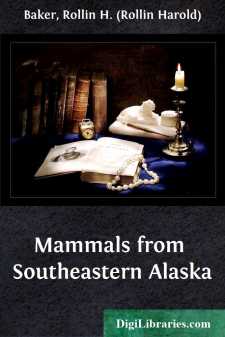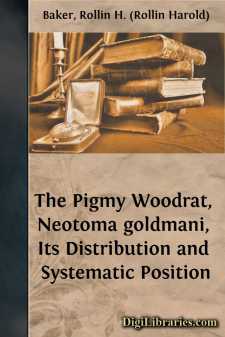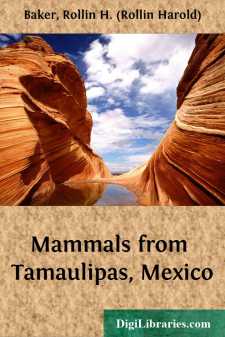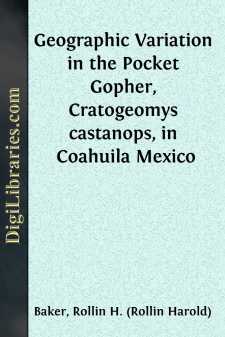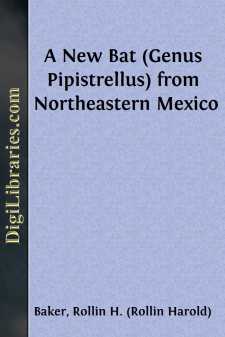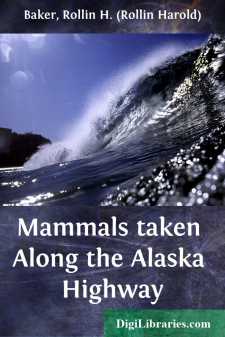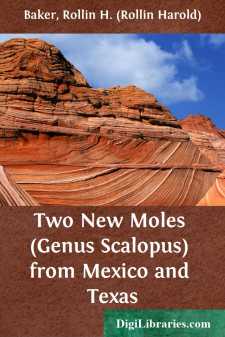Categories
- Antiques & Collectibles 13
- Architecture 36
- Art 48
- Bibles 22
- Biography & Autobiography 813
- Body, Mind & Spirit 142
- Business & Economics 28
- Children's Books 15
- Children's Fiction 12
- Computers 4
- Cooking 94
- Crafts & Hobbies 4
- Drama 346
- Education 46
- Family & Relationships 57
- Fiction 11829
- Games 19
- Gardening 17
- Health & Fitness 34
- History 1377
- House & Home 1
- Humor 147
- Juvenile Fiction 1873
- Juvenile Nonfiction 202
- Language Arts & Disciplines 88
- Law 16
- Literary Collections 686
- Literary Criticism 179
- Mathematics 13
- Medical 41
- Music 40
- Nature 179
- Non-Classifiable 1768
- Performing Arts 7
- Periodicals 1453
- Philosophy 64
- Photography 2
- Poetry 896
- Political Science 203
- Psychology 42
- Reference 154
- Religion 513
- Science 126
- Self-Help 84
- Social Science 81
- Sports & Recreation 34
- Study Aids 3
- Technology & Engineering 59
- Transportation 23
- Travel 463
- True Crime 29
Mammals from Southeastern Alaska
Description:
Excerpt
The University of Kansas Museum of Natural History received from J. R. Alcorn and Albert A. Alcorn a sizable collection of mammals taken in the summer of 1951 in Alaska. In addition to visiting localities at which they had collected in 1947 and 1948 (see Baker, Univ. Kansas Publ., Mus. Nat. Hist., 5:87-117, 1951) the Alcorns obtained specimens from localities not previously visited in the vicinity of Anchorage and Haines and from Sullivan Island, a small, timbered island in the Lynn Canal. A part of the funds for field work was made available by the Kansas University Endowment Association. The loan of specimens for comparative study from the Biological Surveys Collection of the United States National Museum is acknowledged.
Merriam. Dusky Shrew.—Comparison of two specimens from 7 miles SSE Haines and eight from Sullivan Island (six from the northeast end of the island and two from the southeast end) with topotypes of Sorex obscurus longicauda Merriam from Wrangell, Alaska, and with topotypes of Sorex obscurus alascensis from Yakutat, Alaska, shows that our specimens are intermediate between the two named kinds. However in nine of ten characters these specimens more closely resemble S. o. alascensis than S. o. longicauda. Measurements of specimens from Wrangell and from localities progressively northward along the Alaskan coast reveal a decrease in size of the skull in a clinal fashion. Specimens from Sullivan Island are larger than those from the mainland south of Haines, which are in turn larger than specimens from 9 miles W and 4 miles N of Haines (reported upon by Baker, op. cit.). No step is apparent in this cline and assignment of specimens must be made on a somewhat arbitrary basis. Specimens from Juneau, Alaska, in the Biological Surveys Collection of the United States National Museum, were assigned by Jackson (N. Amer. Fauna, 51: 128, 1928) to S. o. alascensis but seem to us to be closer to S. o. longicauda.
(Baird). Water Shrew.—Two males taken on August 5, at Peters Creek, elevation 300 ft., 20 miles NE of Anchorage provide a northwestern extension of the known range of this species. In external and cranial characters the males resemble S. p. navigator from 9 miles W and 4 miles N of Haines, Alaska, and from Washington County, Idaho. The specimens from Peters Creek do not agree with the description of Sorex alaskanus Merriam as given by Jackson (op. cit.:189) although one, a second year animal, has the lambdoidal crests exceptionally well developed, as does S. alaskanus.
(LeConte). Little Brown Myotis.—A male taken at Peters Creek, elevation 300 ft., 20 miles NE of Anchorage, is darker than specimens assigned to this subspecies from northeastern British Columbia (Muncho Lake). Eight skins and skulls (three adults and five young of the year) and 18 specimens in alcohol taken at Screw Creek, elevation 2600 ft., mile 742 (10 miles S and 50 miles E Teslin, Yukon Territory), British Columbia, seem typical of M. l. lucifugus. These were obtained on August 11, 1951, at the same locality where on July 1, 1947, a single bat assigned to M. l. alascensis Miller was taken (see Baker, op. cit.:95). The latter specimen is readily distinguished by its darker color both above and below from those taken in 1951.
Howell. Red Squirrel.—A female taken at Peters Creek, elevation 300 ft., 20 miles NE of Anchorage, is referred to this subspecies after comparison with the published description of T. h. kenaiensis Howell (Proc. Biol. Soc. Washington, 49:136, 1936), with specimens of T. h. preblei Howell from Yerrick Creek, Alaska, and with T. h. petulans (Osgood) from 1 mile S of Haines....


